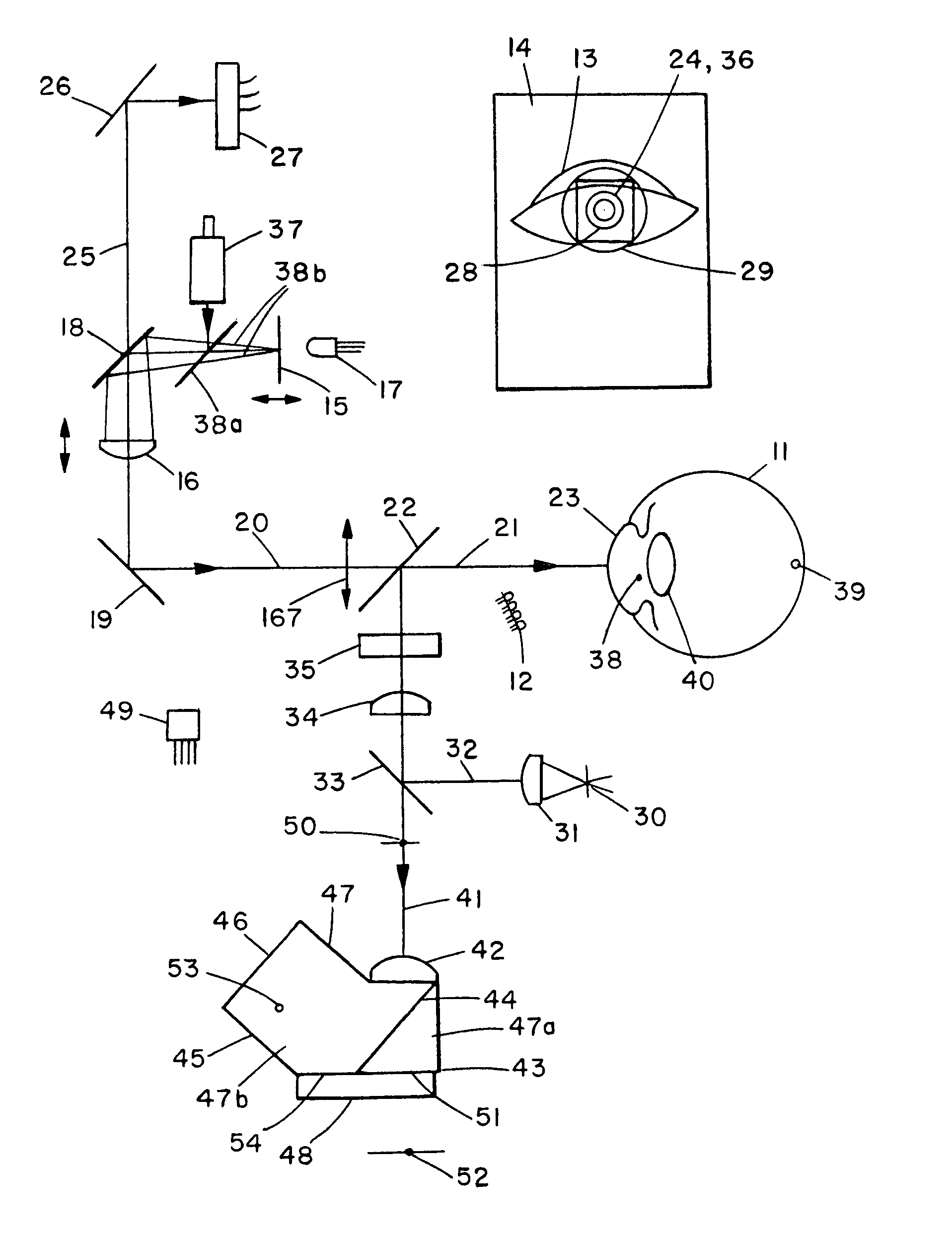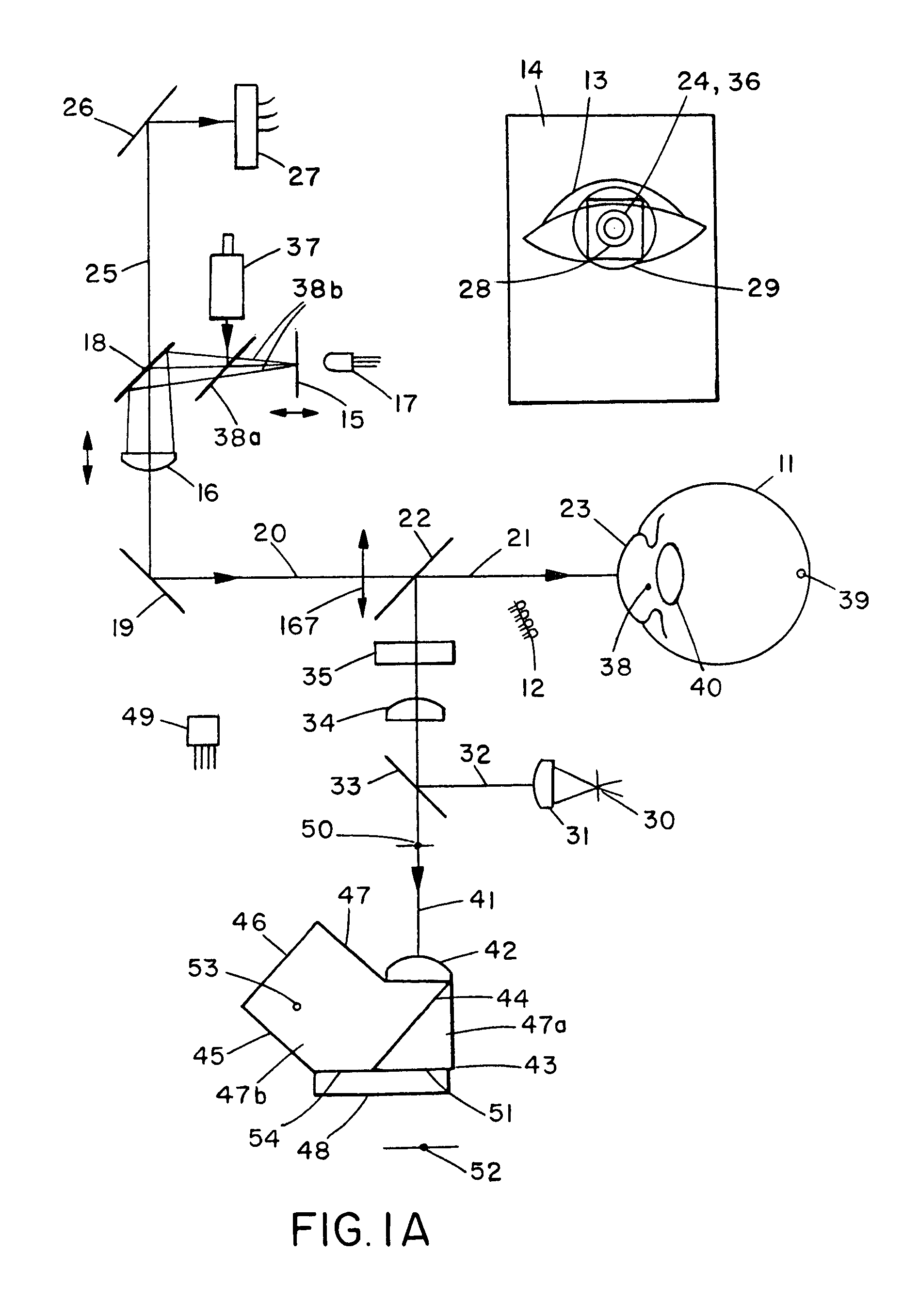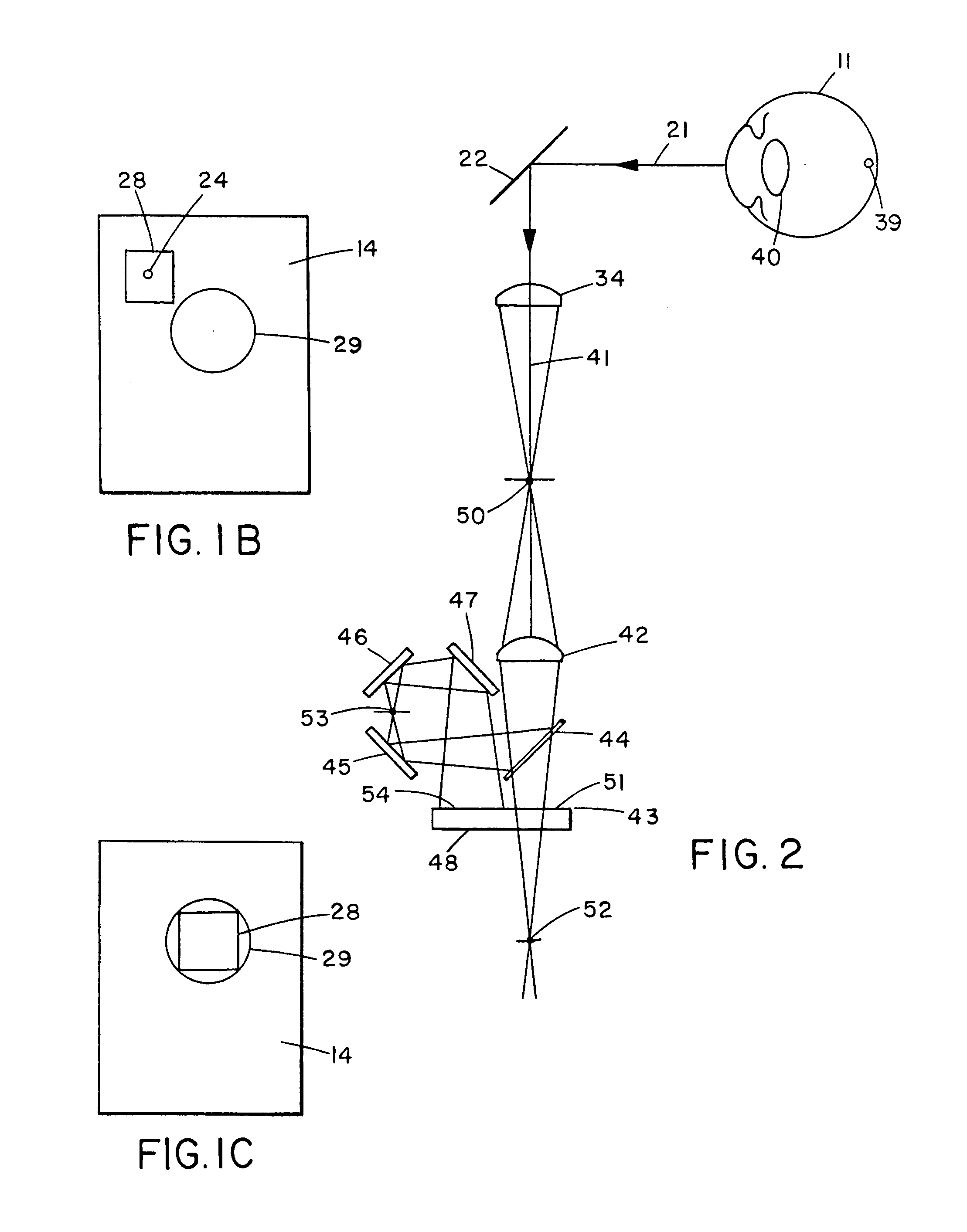Complete autorefractor system in an ultra-compact package
a technology of autorefractors and components, applied in the field of optical instruments, can solve the problems of large population, limited use of “autorefractors,” and high price, and achieve the effect of convenient use and convenient us
- Summary
- Abstract
- Description
- Claims
- Application Information
AI Technical Summary
Benefits of technology
Problems solved by technology
Method used
Image
Examples
Embodiment Construction
[0034]Our invention uses a simple yet novel embodiment for optical alignment. This novel embodiment also controls where the eye is looking and focused. In conjunction with sources to illuminate the eye and a CCD to image the eye, the basic embodiment comprises one lens and one beam splitter. This simple system provides multiple capabilities.
[0035]First, our illumination and imaging system provides a fixation target. The fixation target, at infinity, is looked at, “fixated,” by the patient. On an LCD screen the system simultaneously images the eye to facilitate locating and acquiring the eye. A series of color prompts and guide marks on the LCD make alignment easy. Using the LCD screen, the operator simply moves an illuminated square into the center of a fixed illuminated circle. Reflections from the cornea of the eye are sensed by the CCD imager. These reflections are caused by the refractor emitter and by the fixation target. The reflections are made to coincide by a simple beam st...
PUM
 Login to View More
Login to View More Abstract
Description
Claims
Application Information
 Login to View More
Login to View More - R&D
- Intellectual Property
- Life Sciences
- Materials
- Tech Scout
- Unparalleled Data Quality
- Higher Quality Content
- 60% Fewer Hallucinations
Browse by: Latest US Patents, China's latest patents, Technical Efficacy Thesaurus, Application Domain, Technology Topic, Popular Technical Reports.
© 2025 PatSnap. All rights reserved.Legal|Privacy policy|Modern Slavery Act Transparency Statement|Sitemap|About US| Contact US: help@patsnap.com



